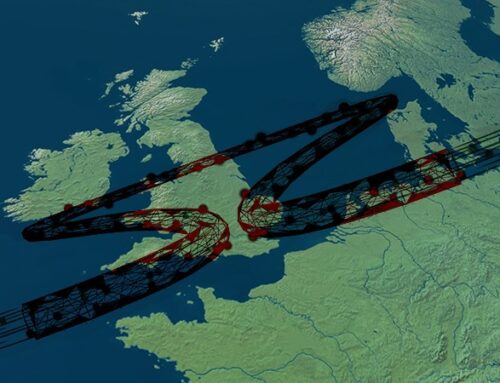In its Future Energy Scenarios, National Grid presents its views of the future of the GB energy system, which I have described here. As I was exploring the scenarios, I was struck by some surprising features of the scenarios, in particular that three of them show high levels of renewable generation based on an assumption that despite being characterised by low “green ambition” the Consumer Power scenario will see high levels of local solar generation.
In presenting its scenarios, National Grid says of itself:
“As System Operator (SO), we are perfectly placed to be an impartial enabler, informer and facilitator.”
Setting aside the somewhat grandiose tone, this statement is open to challenge in the basis of fact, since National Grid is not an independent system operator – it owns as well as operates the transmission system and its revenue model is constructed accordingly. As a result, there has been some debate as to whether the role of the system operator should be separated from ownership of the assets, with some (including the House of Commons Energy and Climate Committee) suggesting that the system operator should be fully independent.
In January, the Government ordered that National Grid should implement greater separation between the system operation and transmission ownership parts of the business, but stopped short of requiring full legal separation. In its modelling of future energy scenarios, National Grid may be revealing further conflicts on interest.
At first glance, it may not be obvious how National Grid would benefit from an energy system that is characterised by high levels of renewable generation, and in particular high levels of distribution-connected solar power. However, the recently published future energy scenarios show high levels of new nuclear and new interconnectors featuring strongly – National Grid benefits directly from developing interconnectors and large new nuclear would certainly be transmission-connected.
Large amounts of renewable generation create system challenges which National Grid must solve. The scenarios suggest that it does not see a major role for storage or demand side response, both of which could cannibalise its revenues.
“Because non-transmission connected, intermittent, generation will increase, as will interconnectors, they will cause more variability. Consequently, larger transmission connected generators and other interconnectors will have to operate more flexibly to accommodate this. This will be complemented by a growth in balancing tools and technologies such as energy storage and flexible demand.
To manage the rapid changes in frequency and voltage caused by the newer type of low carbon generators, a holistic approach, which harnesses capabilities across energy and network resources, is required to address this shortage. What technologies will be utilised has yet to be established by the marketplace.”
In my previous post, I observed that, with the exception of the Steady State scenario, all scenarios show installed capacity far exceeding demand, suggesting low utilisations and periods of surplus. Managing these dynamics will be a significant challenge for National Grid, requiring more balancing actions, and the development of new approaches such as the use of synchronous compensators, which may well be seen as parts of the transmission system.
National Grid also suggests that in order to meet de-carbonisation targets, taxes will be levied on the use of gas for various applications such as heating (this idea was mooted by the Committee on Climate Change’s report on UK heat policy last October). Electrification of heating would certainly be to the benefit of National Grid, requiring significant additional generation and transmission capacity. As indeed would a widespread adoption of electric vehicles. National Grid has recently sold its gas distribution network, perhaps in anticipation of policies to shift the heating sector away from gas and towards electricity.
As John Constable points out in his recent blog, National Grid’s Future Energy Scenarios: Cui Bono?, the de-carbonisation of heat would be potentially larger in scale than the de-carbonisation of the electricity system and could lead to consumption subsidies as well as production subsidies. Whether a move away from the use of gas for heating is driven by direct taxes on gas use or subsidies for alternatives, or some combination of the two, the outcome for consumers would be the same: higher energy costs. These would be on top of the higher costs of balancing the system.
Whether any of this matters depends on how the scenarios are used. If they are simply taken as a glimpse of some possible future outcomes, then they can be seen as a curiosity, and no harm is done. If, on the other hand, they are used to inform policy choices, the inherent conflicts of interest should be considered more carefully. The production of future energy scenarios for policy-making purposes should be carried out on a strictly impartial basis, and is arguably a role for BEIS and not National Grid.
But ultimately, this further underlines the need for a fully independent system operator who can truthfully be described as impartial.







It is a strange kind of thermodynamic madness to use gas to generate electricity at perhaps 60% efficiency in a CCGT plant, suffer 7% transmission losses on distributing the output, to consume the remainder as heat, compared with simply losing 7% to pumping and operating a 95% efficient gas boiler. Doubtless the idea is to try to refrigerate the atmosphere using heat pumps. (I can just imagine it being sold that way to ministers, too).
National grid’s interest is to maximise the size of its asset base and thus the sum available for shareholders, which is set essentially as a regulated return on assets. The more grid connections and transmission lines that are needed because generation is remote from demand, spiky and intermittent and in need of backup that also must be grid connected the better it is for them. They are the last people who should be asked to arbitrate.